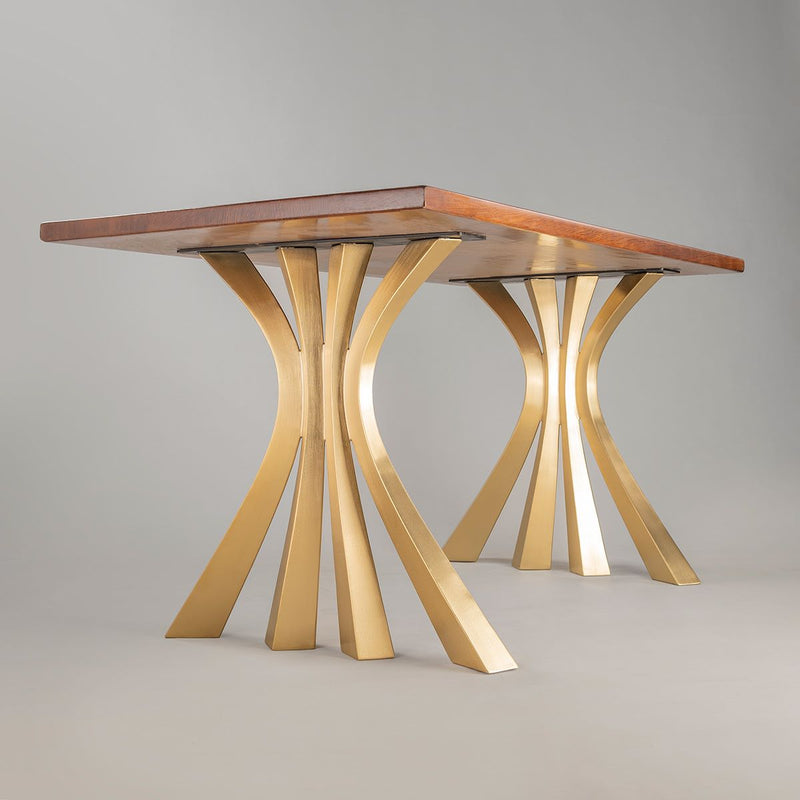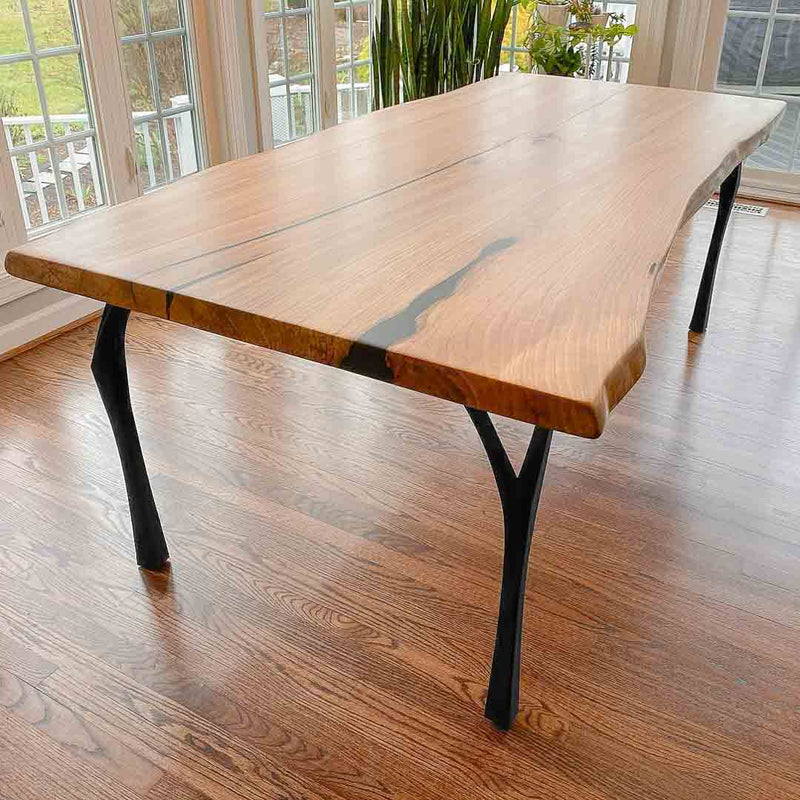Upgrade Your Furniture with Elegant Dining Room Table Legs
Upgrade Your Furniture with Elegant Dining Room Table Legs
Blog Article
A Thorough Check Out Table Leg Styles: Finding the Perfect Suit
Picking the right eating table leg design is vital for both aesthetic appeal and useful capability. For those with larger tables, trestle legs make sure sturdy assistance, whereas barrette legs present a mid-century modern vibe with their minimal design. The x-shaped legs blend modern design with enhanced security.
Typical Four Legs
Among the different types of dining table leg styles, the traditional four-leg layout continues to be a timeless option for lots of houses. This classic configuration provides a harmonious blend of performance and visual appeals, making it a seasonal fave. 4 legs supply well balanced assistance, making sure the table remains stable and efficient in bearing substantial weight. This is particularly advantageous for houses that often hold big events or utilize their table for several functions, such as job or crafting.
From an aesthetic perspective, the traditional four-leg layout can be conveniently adapted to various indoor styles. Whether crafted from wood, steel, or a mix of materials, these legs can be delicately sculpted, smooth and minimalistic, or anything in between. Their flexibility permits them to match both rustic and contemporary setups effortlessly.
Additionally, the straightforward framework of the four-leg style facilitates convenience of motion and placement within an area. Unlike more complicated bases, this style decreases obstructions, offering ample legroom for restaurants. In recap, the standard four-leg table leg design marries enduring elegance with useful performance, making it a sharp choice for those looking for both form and feature in their eating furniture.
Pedestal Base
Typically commemorated for its elegant and space-efficient design, the pedestal base is a recognized alternative to the conventional four-leg setup in eating table leg designs. Without edge legs, diners are managed greater liberty of activity, making it a perfect option for round and oblong tables that advertise even more intimate and comprehensive celebrations.
Moreover, the pedestal base's central support can deal with significant weight, enabling using heavier tabletops, such as marble or thick hardwood. This strength coupled with its aesthetic convenience makes the pedestal base a popular option in both standard and modern indoor setups. It can flawlessly integrate with various layout motifs, from timeless style to minimal modernity. In addition, the main column itself uses a canvas for complex styles and creative expressions, including an aspect of visual interest beneath the table. In recap, the stand base integrates performance with style, making it a refined and functional choice for diverse eating settings.
Trestle Legs
Trestle legs offer a robust and classic structure for dining tables, identified by their straight cross-bracing and strong assistance light beams. Originating from medieval times, this design has actually evolved yet preserved its essential framework, making it a perennial favorite in both standard and contemporary setups. The central trestle light beam, commonly sustained by two or more vertical blog posts, provides phenomenal security, enabling for bigger table sizes without the requirement for additional legs.
A substantial advantage of trestle leg tables is the adequate legroom they offer. Unlike tables with four edge legs, the absence of blockages at the table's sides offers unblocked space for chairs and diners, improving comfort and accessibility. This makes trestle tables suitable for suiting larger celebrations, whether in a dining area or a reception hall.
The aesthetic flexibility of trestle legs is notable. Readily available in a variety of materials such as wood, metal, and composite, they can be ended up to complement a broad array of interior styles. From rustic farmhouse to smooth modern designs, trestle legs can be tailored view publisher site to suit specific preferences. Their long-lasting charm and useful advantages make trestle legs an engaging choice for those seeking both style and usefulness in their dining table.
Barrette Legs

The appeal of hairpin legs exists in their simplicity and adaptability - dining room table legs. Offered in a range of materials, consisting of steel and brass, they can be ended up in numerous colors to enhance various interior styles. Whether coupled with a rustic wood tabletop or a contemporary glass surface, barrette legs easily mix functionality with a touch of vintage appeal
Durability is another important source significant attribute of hairpin legs. Regardless of their delicate look, these legs are engineered to bear considerable weight, making sure the table stays stable and safe and secure. In addition, they are relatively simple to set up, making them a prominent selection for do it yourself enthusiasts and expert furniture makers alike.
X-Shaped Legs

Built from products such as steel, timber, or a mix of both, X-shaped legs can be tailored to match various style preferences. Steel legs commonly offer a sleek and industrial feel, suitable for loft-style homes and modern-day eating areas.
In addition, the design behind X-shaped legs ensures even weight distribution, reducing the danger of wobbling and improving longevity. This makes them particularly well-suited for larger table that require additional support. Essentially, X-shaped see this legs mix sensible design with modern-day aesthetics, making them a timeless choice for varied eating environments.
Final Thought
A detailed understanding of dining table leg styles reveals the distinct characteristics and advantages of each layout. Traditional 4 legs supply security and ageless appeal, while pedestal bases give legroom and a structured appearance. Trestle legs make certain durable assistance for larger tables, and barrette legs introduce a mid-century modern-day visual. X-shaped legs incorporate modern style with improved stability. Choosing the proper leg style ensures both functional and visual fulfillment in any type of dining room.
Report this page